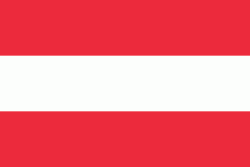Millstatt
Millstatt am See is a market town of the Spittal an der Drau District in Carinthia, Austria. The traditional health resort and spa town on Lake Millstatt is known for former Benedictine Millstatt Abbey, founded about 1070.
It is situated on the southern slope of the Gurktal Alps (Nock Mountains), on an alluvial fan peninsula on the lake's northern shore. The municipal area reaches from an elevation of 588 m at the lakeside to 2101 m AA at the crest of the Millstätter Alpe massif. It comprises the cadastral communities of Millstatt proper, Obermillstatt, Matzelsdorf, and Laubendorf.
Beneath the Millstatt marketplace stand the extensive buildings of the former Benedictine monastery with its four massive towers and the monastery church at the highest point.
It is situated on the southern slope of the Gurktal Alps (Nock Mountains), on an alluvial fan peninsula on the lake's northern shore. The municipal area reaches from an elevation of 588 m at the lakeside to 2101 m AA at the crest of the Millstätter Alpe massif. It comprises the cadastral communities of Millstatt proper, Obermillstatt, Matzelsdorf, and Laubendorf.
Beneath the Millstatt marketplace stand the extensive buildings of the former Benedictine monastery with its four massive towers and the monastery church at the highest point.
Map - Millstatt
Map
Country - Austria
 |
 |
| Flag of Austria | |
Austria emerged from the remnants of the Eastern and Hungarian March at the end of the first millennium. Originally a margraviate of Bavaria, it developed into a duchy of the Holy Roman Empire in 1156 and was later made an archduchy in 1453. In the 16th century, Vienna began serving as the empire's administrative capital and Austria thus became the heartland of the Habsburg monarchy. After the dissolution of the Holy Roman Empire in 1806, Austria established its own empire, which became a great power and the dominant member of the German Confederation. The empire's defeat in the Austro-Prussian War of 1866 led to the end of the Confederation and paved the way for the establishment of Austria-Hungary a year later.
Currency / Language
| ISO | Currency | Symbol | Significant figures |
|---|---|---|---|
| EUR | Euro | € | 2 |
| ISO | Language |
|---|---|
| HR | Croatian language |
| DE | German language |
| HU | Hungarian language |
| SL | Slovene language |















